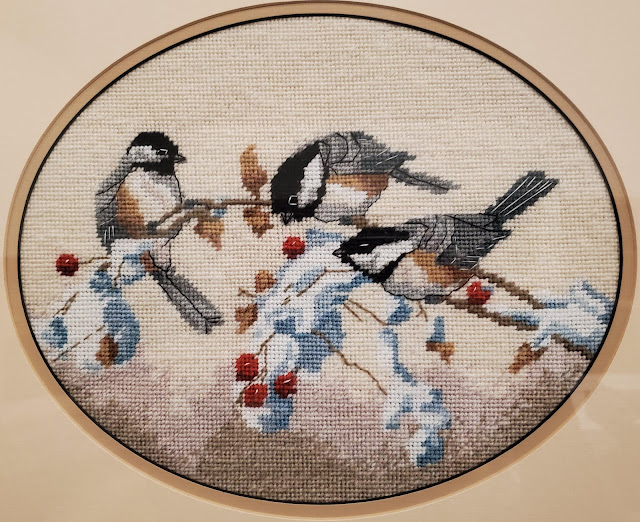Featured
GENEALOGY CHALLENGE 2021 - Art & Craft: Needle & Brush
GENEALOGY CHALLENGE 2021
Art & Craft: Needle and Brush - January 27th entry of a 31-day challenge to post a document, photo or artifact on social media every day in January.
by Nancy Gilbride Casey
Each person makes their mark on the world. Sometimes that mark is a beautiful piece of art or craft which they leave behind. Each piece is a product of their imagination, their skillful hands, their time and patience. It is also a record of their desire to bring forth beauty in the world, and so reflects their character as well.
Our family definitely has its share of creative members. As a couple, my husband Jim's paternal grandparents left many pieces of their artwork for their descendants to enjoy.
Harold Edwin Casey (1915-2009) and Claretta Hall Casey (1917-2000) were married over 60 years. Family, faith, and running businesses filled up their lives, but when they had time, needlepoint and painting were hobbies they enjoyed.
When Harold became a widower, he moved to Texas to live with his son, so we had a tiny extended family of me and my husband, our two children, and my husband's father and grandfather. Our children were fortunate enough to be able to spend nearly 10 years with their great grandfather—whom they called GrandPapa— in their lives, and with whom they shared a special friendship. The lovely young lady below was a gift from GrandPapa to his great granddaughter Anne.
 | |
| Grandpapa Casey was in his 90s when he stitched this for his great granddaughter. | |
Another favorite stitched piece is this yellow rose:
Meanwhile, Claretta Hall Casey, Jim's grandmother, enjoyed painting and embroidery. Among my favorites paintings are these two tiny ones, each not more than 4" x 6" or so. They are simple and sweet.
We enjoy having these tangible reminders of our family members now gone, which bring a bit of beauty to our home and world.
NEXT UP: Art & Craft II - Hooked
2 Ibid.




Comments
Post a Comment